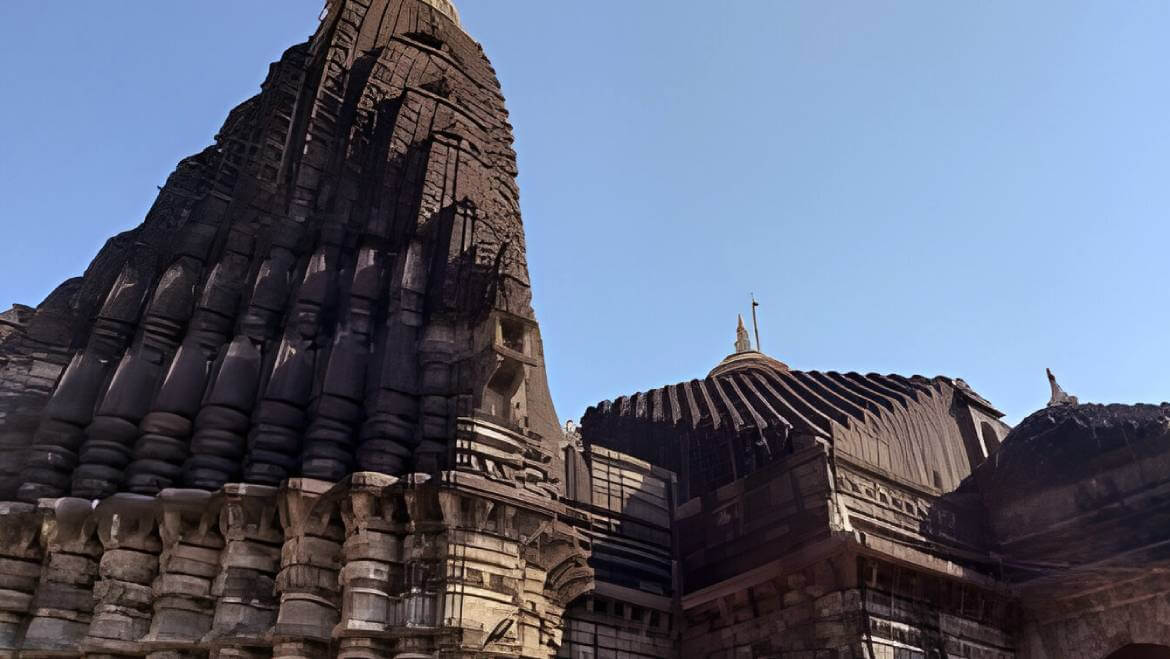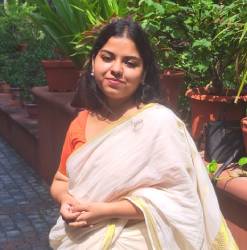Dedicated to one of the main gods in Hinduism, Jyotirlingas are temples that worship Lord Shiva as their main deity. These temples are some of the holiest shrines spread throughout the country and form an important pilgrimage destination for his devotees. One of the reasons why the Jyotirlinga temples are considered among the most revered temples is because these are believed to be the manifestation of Lord Shiva himself. There are a total of 12 Jyotirlingas in India that exist in different regions of the country and attract crowds of devotees every year who pay their visits on a religious tour.
Collectively known as the Panch Jyotirlinga, five among these 12 Jyotirlinga temples are situated in the West Indian state of Maharashtra. These temples form an essential part of pilgrimage for the devotees of Lord Shiva who come to the state from across the country to receive blessings from him. Panch Jyotirlingas form an important religious circuit of Maharashtra and welcomes crowds of devotees every year, especially during the festive season of Mahashivratri.
The five temples that form the Panch Jyotirlinga include:
- Bhimashankar Temple
- Trimbakeshwar Temple
- Grishneshwar Temple
- Aundha Nagnath Temple
- Parli Vaidyanath Temple
Read along to find out everything you need to know about Panch Jyotirlingas of Maharashtra.
Bhimashankar Temple
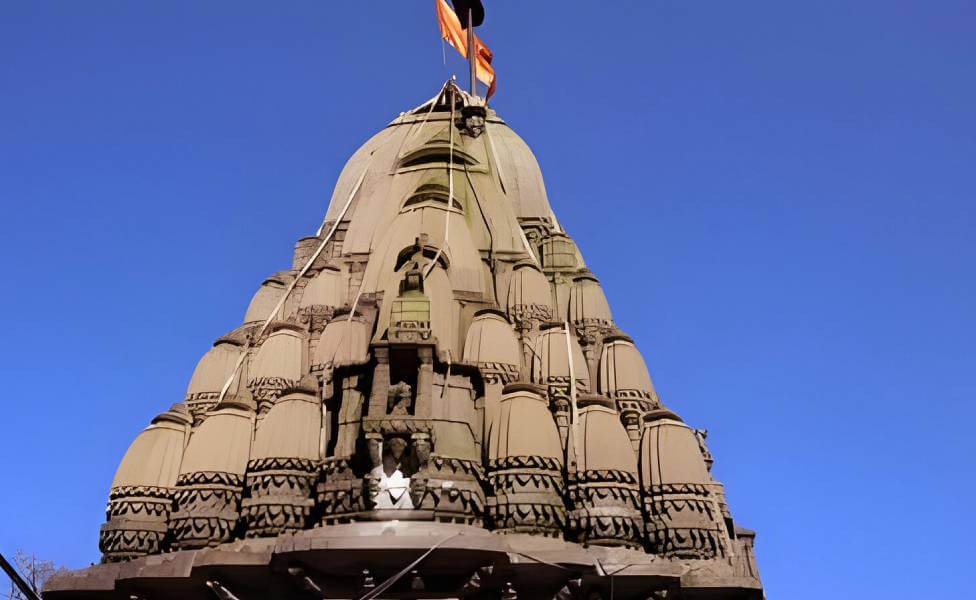
Bhimashankar Temple owes its name and existence to Bhima, the son of the demon Kumbhakarna from the Hindu epic of Ramayana. One among the 12 Jyotirlinga Temples, Bhimashankar Temple is located at a distance of 123 km from the city of Pune in Maharashtra. The temple is based along the River Bhima and finds itself surrounded by the Bhimashankar Wildlife Sanctuary, offering scenic views and making it a trekker’s paradise.
Though the present structure has been strengthened during the 18th century, the original temple finds mentions in literature that goes as far back as the 13th century. It is believed that it was Nana Phadnavis, a maratha salesman and administrator that built the Sabhamandap, or the open assembly hall and the temple’s Shikhara, or the superstructure atop the mandap in the 18th century.
An important temple of the Panch Jyotirlinga of Maharashtra, Bhimashankar Temple has been made in the Nagara style of temple architecture, where influences of Rajasthani and Gujarati architectural styles can also be seen. A temple made with exquisite carvings, the outer walls of Bhimashankar Temple displays scenes and stories covering the Hindu epics of Mahabharata, Ramayana, Krishna Leela, and the Shiva Leela, further adding to its beauty.
A Jyotirlinga dedicated to the worship of Lord Shiva, Bhimashankar Temple gets thronged with devotees during the occasion of Mahashivratri. Situated along the Sahyadri Ranges in Maharashtra, this temple of the Panch Jyotirlinga pilgrimage is one that you must pay a darshan to.
Legend Related to the Temple
According to a popular legend regarding the temple, the Bhimashankar Temple was formed as a result of the battle that took place between the demon named Tripurasura and the Ardhanariswara form of Lord Shiva and Goddess Parvati. The demon was notorious for troubling the people of the region, leading the people to call upon the lord in an attempt to be saved. After defeating the demon, it is at the request of the gods that Lord Shiva manifested himself at this Panch Jyotirlinga Temple to protect the people.
Address: Bhorgiri, Khed taluka, near Pune, Maharashtra
Darshan Timings: 5:00 AM to 09:30 PM
Other Interesting Blogs to Read
Trimbakeshwar Temple
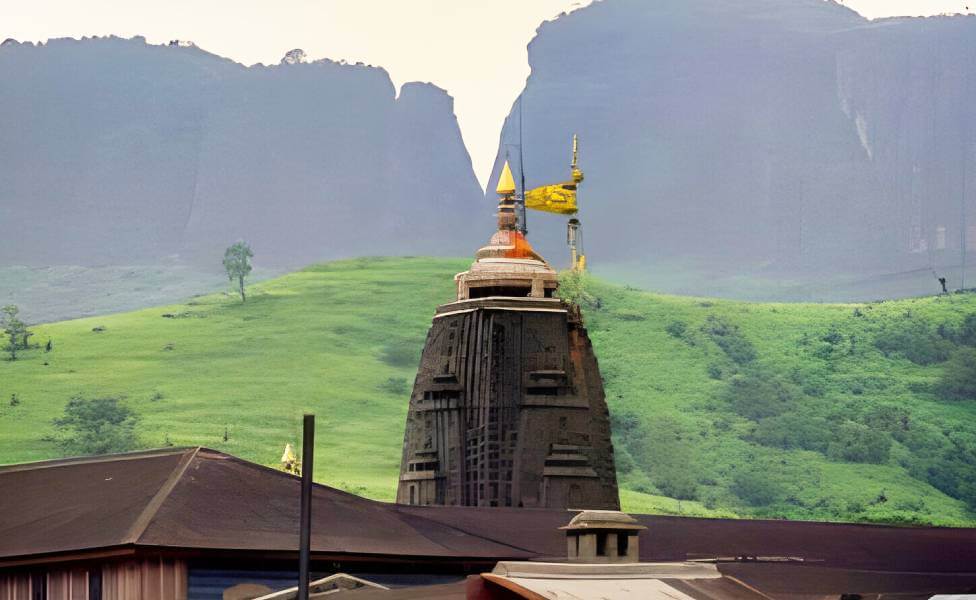
At a distance of 28 km from the holy city of Nashik, Trimbakeshwar Temple is part of the Panch Jyotirlinga Temples in Maharashtra. Situated along the River Godavari, the temple is surrounded by the hills of Brahmagiri, Nilagiri, and Kalagiri providing a mesmerizing view for its visitors. Standing at the site of an older temple, the current temple has been the work of Balaji Baji Rao, a Peshwa ruler of the 17th century.
Made up entirely of just black stone, Trimbakeshwar Temple is known for its manifestation of Lord Shiva, the three-faced Shivalinga which is meant to represent the three main gods of Hinduism, Lord Brahma, Lord Vishnu, and Lord Shiva. The main icon of worship at the temple, the shivalinga sits adorned with a crown of diamonds, emeralds, and precious stones.
Along with worshiping its presiding deity of Lord Shiva, this Panch Jyotirlinga Temple in Maharashtra also has images of many other gods and goddesses such as Goddess Ganga, Lord Jaleswara, Lord Rameswara, Lord Rameswara, Lord Gautameswara, Lord Kedarnath, Lord Rama, Lord Krishna, Lord Parasurama, and Lord Lakshmi Narayana.
Another holy aspect of the Trimbakeshwar Temple is the holy kund or the holy pond located at a distance of 400 meters from the main shrine. Known as the Kushavarta Kund, the pond is a 21 ft. deep kund and is said to have been built in 1750. The water in the pond is that of River Godavari and is believed to be the place where the holy river emerges after it vanishes among the hills of Brahmagiri.
Legend Related to the Temple
The existence of this jyotirlinga is associated with Gautama Rishi and his wife Ahalya who lived along the Brahmagiri Hills. During a season of famine, finding themselves with an abundant supply of food and grains, jealousy of other sages was aroused who released a cow into his farm and died when Gautama Rishi tried to scare it away. In an attempt of purification, he asked Lord Shiva to bring down River Ganga leading to the emergence of River Godavari and asked Lord Shiva to reside at the Trimbakeshwar Temple.
Address: Shrimant Peshwe Path, Trimbak, Maharashtra
Darshan Timings: 05:30 AM to 09:00 PM
Other Interesting Blogs to Read
Grishneshwar Temple
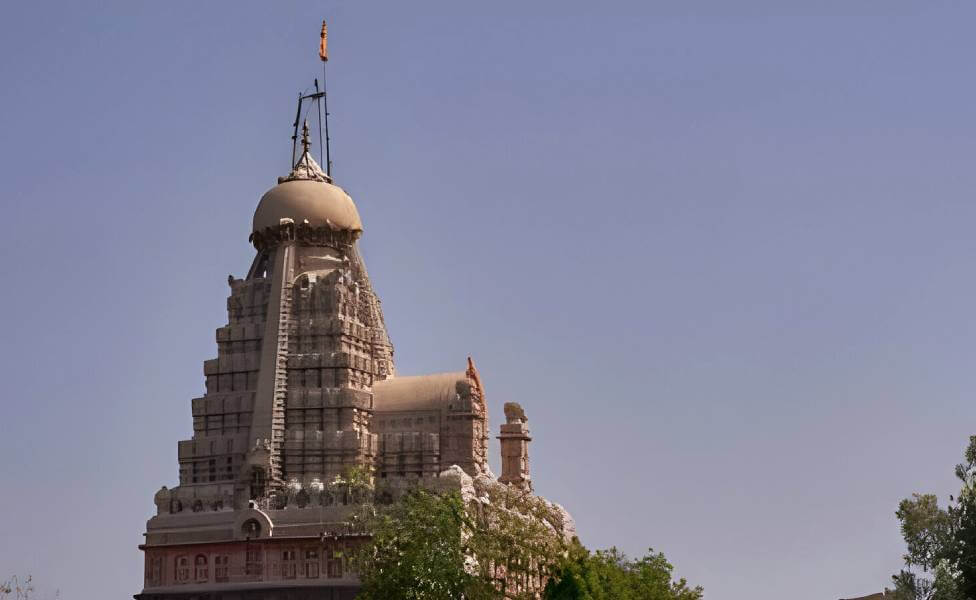
Considered to be the smallest among all the jyotirlingas, Grishneshwar Temple in Maharashtra is the third important temple in the Panch Jyotirlinga pilgrimage. Located near the city of Aurangabad, the temple has an elaborate five storeys tall Shikhara, or the superstructure atop the temple. Built in a mix of red and black stones, Grishneshwar Temple is situated near the UNESCO World Heritage Site of Ellora caves.
Though the original structure is believed to have existed even before the 13th century, it faced vandalism and ruins at the hands of invaders. The current structure of this Panch Jyotirlinga Temple in Maharashtra is said to have been constructed by the Queen of Indore, Ahilyabai Holkar later in the 18th century. Unlike the temples that are seen in the region, Grishneshwar Temple is built in a traditional south Indian style of temple architecture and contains numerous sculptures and pillars with intricate carvings of many gods and goddesses throughout.
Despite its many sculptures, the most prominent one stands to be the one carved out of red stone, dedicated to the Dashavatara, or the ten re-incarnations of Lord Vishnu. Along with the sculpture of Lord Vishnu, Grishneshwar Temple also has a sculpture of Nandi, the carrier bull of Lord Shiva.
Legend Related to the Temple
According to the popular legend associated with the Grishneshwar Temple, the temple is related to a Shiva devotee named Grishna, who in hopes of bearing children would carve 101 lingas everyday at the nearby lake. When she did give birth, her sister threw the child into the lake to kill it out of spite, since she herself could not bear a child. With grief, Grishna proceeded to carve the lingas and praise the lord. While in prayer, Lord Shiva appeared at the lake along with her child who was brought back to life. Grishna in complete devotion asked the lord to stay here who then manifested himself as a jyotirlinga at Grishneshwar Temple.
Address: Ghrishneshwar Temple Rd, Verul, Aurangabad, Maharashtra
Darshan Timings: 05:30 AM to 09:30 PM
Other Interesting Blogs to Read
Aundha Nagnath Temple
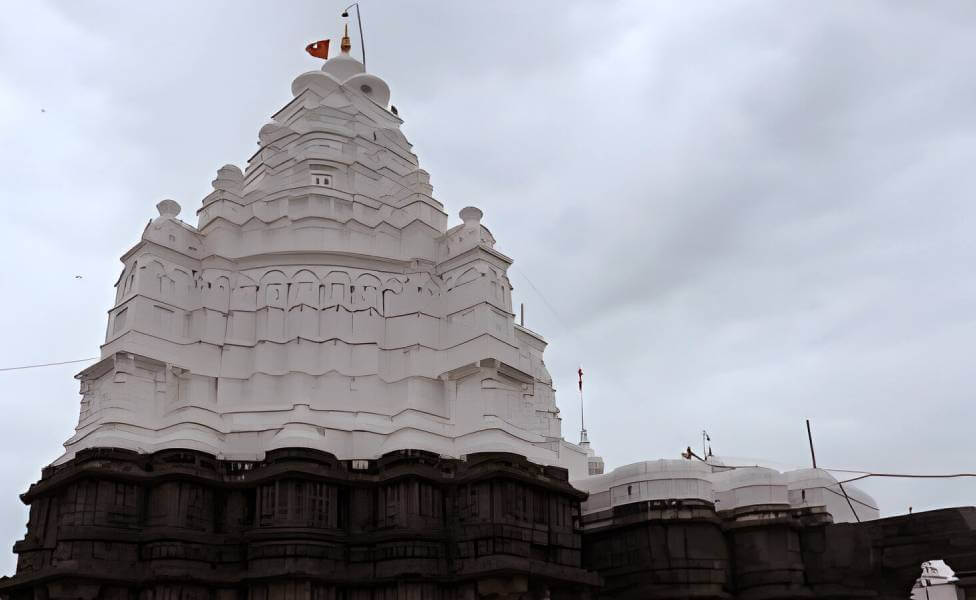
Believed to have been built by the eldest of the Pandava brothers, this Panch Jyotirlinga Temple in Maharashtra is an important pilgrimage destination. Based in the Hingoli district of the state, the original structure of the Aundha Nagnath Temple is said to have been built by the Pandava brother, Yudhishthira during the period of their exile from Hastinapur.
Built in the Hemadpanthi style of architecture, the present structure has seen repairs and restorations by the Chalukya Dynasty and later the Yadava Dynasty, with the current temple structure of Aundha Nagnath reconstructed by the Queen of Indore, Ahilyabai Holkar. Having seen attacks and vandalism by enemy invaders, the temple stood ruined leading the upper portion of the temple to be renovated, which stands displaying the architectural style most prevalent during the rule of the Peshwa Dynasty.
The manifestation of Lord Shiva, the jyotirlinga at the Aundha Nagnath Temple is located at a lower level than the temple and can be reached by a flight of stairs. A popular temple that forms the Panch Jyotirlinga pilgrimage in Maharashtra, the Aundha Nagnath temple witnesses the most crowd for darshan during the festivities of Mahashivratri and Vijayadashami.
Legend Related to the Temple
There are many legends associated with the Aundha Nagnath Temple, with one of them being about the demon Daruka who resided in the region and troubled the people. Seeing this Supriya, a devotee of Lord Shiva summoned him and Goddess Parvati seeking help. As such they proceeded to destroy various demons in the region, leading Daruka to seek the forgiveness of the lord. He then requested him to remain here.
In another story, it was the Pandava brothers that noticed that cows would drink water from the nearby river and then would offer their milk in return. Sensing the presence of a god, the brothers dug up the river and poked around the river bed until blood seeped out. As a result, a Shiva linga emerged from the river which the brothers took to establish the temple.
Address: Nanded – Aundha Rd, Aundha Nagnath, Hingoli, Maharashtra
Darshan Timings: 04:00 AM to 09:00 PM
Other Interesting Blogs to Read
Parli Vaidyanath Temple
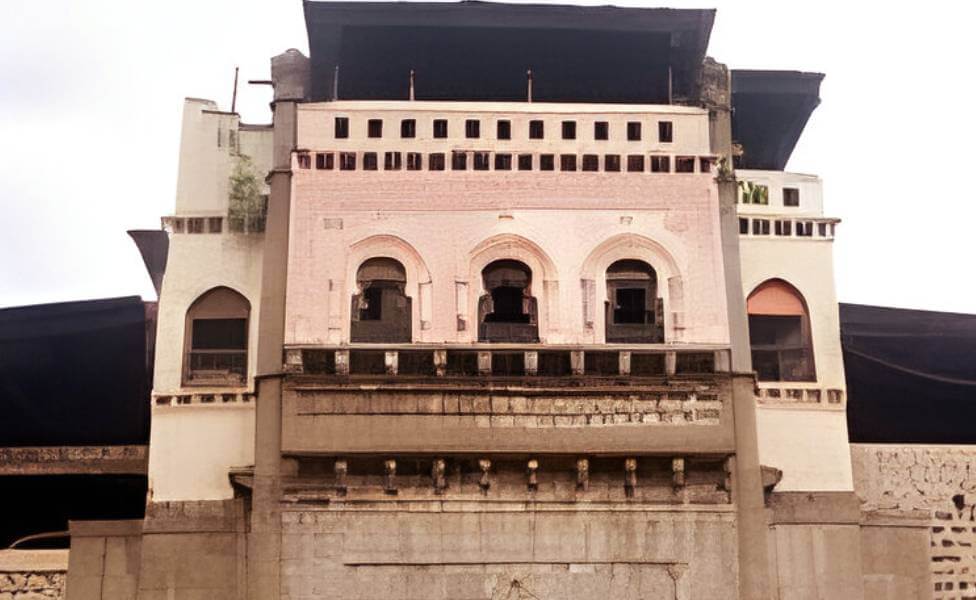
Also referred to by the name of Parli Vaijnath Temple, this Panch Jyotirlinga temple comes together to complete the Panch Jyotirlinga tour in Maharashtra. Constructed during the time of the Yadava Dynasty, the temple is also among the ones restored by the Queen of Indore, Ahilyabai Holkar.
Located in the Beed district, Parli Vaidyanath Temple is an important pilgrimage destination of the state and is among the many temples dedicated to Lord Shiva in Maharashtra. Forming a part of the twelve holy Jyotirlinga temples of the country, the temple showcases Hemadpanthi style of temple architecture. At the Parli Vaidyanath Temple, the manifestation of Lord Shiva, the jyotirlinga is one built of Saligram stone and has many legends and stories attached to its existence.
Built at a height of more than 75 feet from the ground, the temple is built on a higher ground, with the assembly hall and the sanctum sanctorum on the same level, making it easy for the devotees to view the jyotirlinga at the temple of Parli Vaidyanath. With a majestic courtyard, a brass-plated main gate, and holy ponds in its confines, this Panch Jyotirlinga Temple is a place that you must visit on your tour to Maharashtra.
To explore the beauty and serenity of this Panch Jyotirlinga, visit it during the festivities of Mahashivratri, Ekadashi, or Vijayadashami, when the temple sees the most amount of crowd in the year.
Legend related to the temple: As per a legend, it was during the great event of the Samudra Manthan that 14 precious gems came out including Dhanavantari and Amrit. When the demons lunged forward to grab them, Lord Vishnu hid them in a Shiva linga. Angered by it, the demons tried to attack the Shiva linga, which gave out a bright light, leading the demons to be defeated. Since the gods won over the demons here, the place came to be known as Vaijnath.
In another story, Ravana, after sustained penance attempted to cut off his heads to please Lord Shiva, who saw his devotion and blessed him. After which, he proceeded to request the lord to reside in Lanka, leading the lord to bless him with a Shiva linga to be carried to Lanka, although warned him not to put it down anywhere on the way. During his journey though, Ravana decided to take a break, not before instructing a shepherd to carry the Shiva linga. The shepherd couldn’t hold out for long and ended up placing it on the ground. As a result, the Shiva linga could not be moved, even by Ravana and has remained here ever since as the temple’s jyotirlinga.
Address: Parali Vaijnath, Beed, Maharashtra
Darshan Timings: 05:00 AM to 09:00 PM
Other Interesting Blogs to Read
Maharashtra, a land of beaches and high hills is also a land steeped in devotion. This West Indian state is home to many temples and forms an important pilgrimage destination for the devotees of Hinduism. For the devotees of Lord Shiva, Maharashtra is an even blessed state to explore, given the existence of five of the 12 Jyotirlinga temples that are dotted within its boundaries. Forming the Panch Jyotirlingas together, these temples are not only known for their religious significance, but also for their place in mythology and epics, and are popular for their eye-catching and fascinating architecture. Explore the beautiful state of Maharashtra on a Panch Jyotirlinga pilgrimage tour and experience the divinity and devotion of these mesmerizing ancient temples.
Like & Follow our social media accounts at Twitter, Facebook, Linkedin & Instagram for getting the latest updates & offers on holiday packages.
Disclaimer: We do not take credit for some of the licenced paid images used in our blogs, whether from Google Images, Fotolia & Shutterstock. All such images are the copyrights of their respective owners and we try to provide credit for them wherever we can. If, however, any copyright image has been used on our blog, the concerned person can either mail us directly to remove the image or provide credit to whomsoever the image may belong to.
About the author
Sharon is a curious human who is always eager to learn about the history and mysteries of places, which she then brings to life with her words. A travel writer at Tour My India, her bucket list keeps expanding every day in search of places to explore.

 +91-9212777225
+91-9212777225 Plan Your trip
Plan Your trip